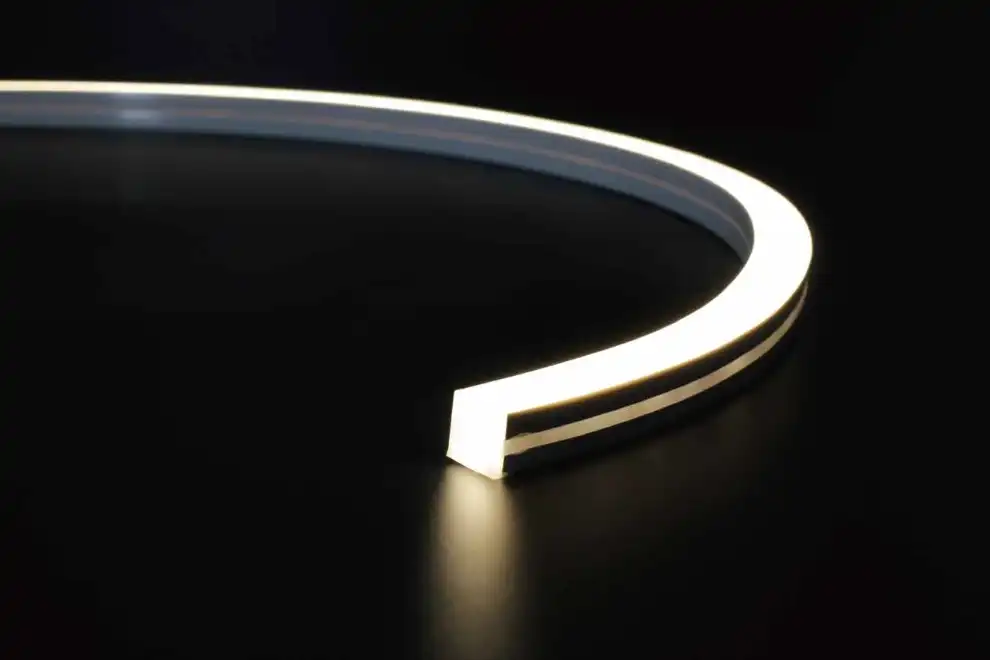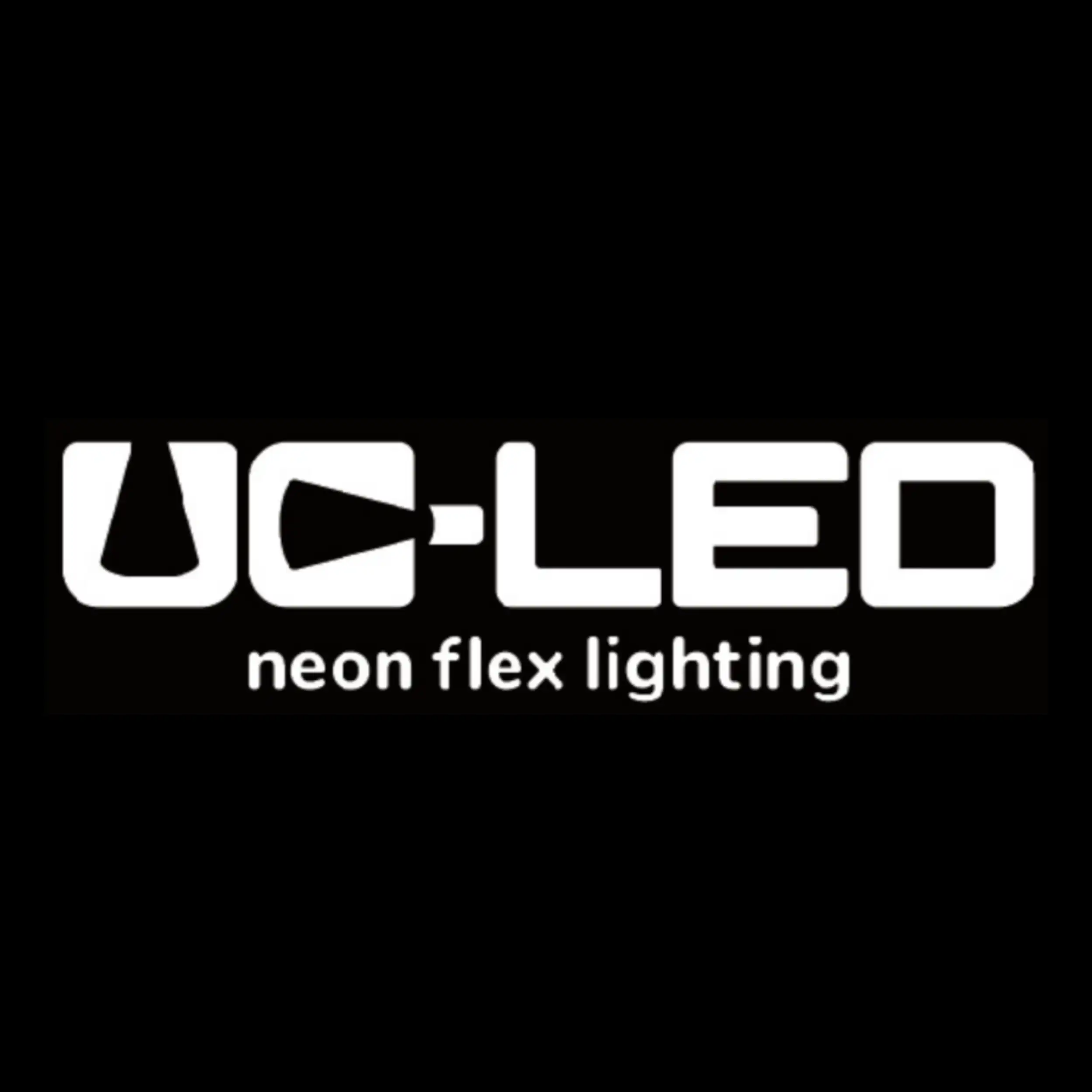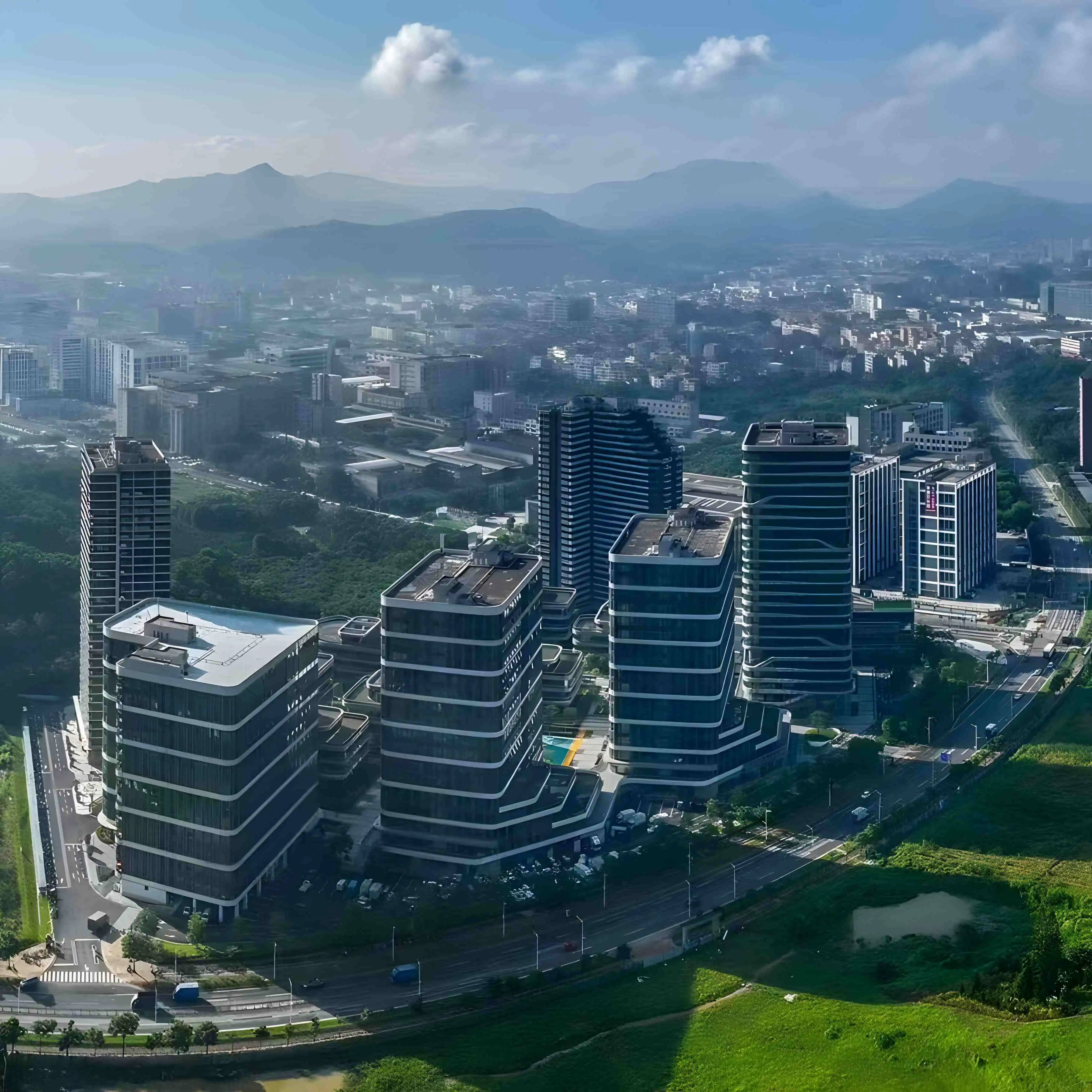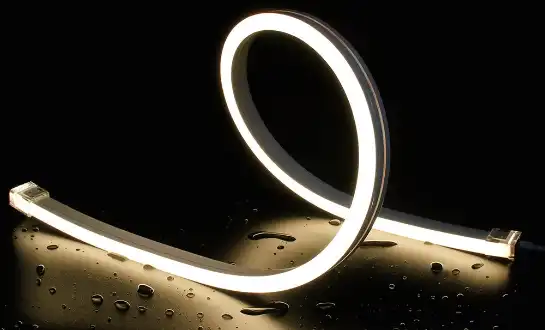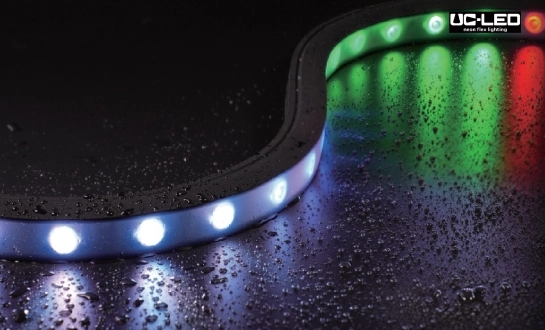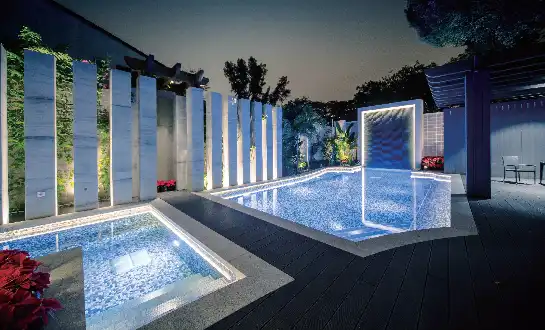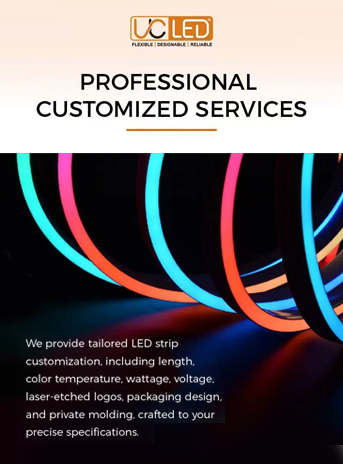Understanding Flexible Neon Strip Technology
Flexible neon strips represent a modern evolution of traditional neon lighting, offering versatility and energy efficiency. These strips utilize LED technology encased in a flexible silicone or PVC housing, mimicking the appearance of classic neon while providing numerous advantages. Unlike fragile glass neon tubes, flexible neon strips are durable, shatterproof, and easily manipulated to fit various shapes and designs.
The core of flexible neon strip technology lies in its construction. These strips typically consist of a series of closely spaced LEDs mounted on a flexible circuit board. The LEDs are then encased in a diffusing material that creates the smooth, continuous light effect reminiscent of traditional neon. This design allows for even light distribution and the iconic "dotless" appearance that many DIY enthusiasts and professionals seek.
Key Components of Flexible Neon Strips
Understanding the components of flexible neon strips is crucial for making an informed choice:
- LEDs: The primary light source, determining brightness and color options.
- Flexible PCB: The backbone of the strip, allowing for bendability and electrical connections.
- Diffuser: The outer casing that spreads light evenly and provides the neon-like glow.
- Connectors: Allow for easy installation and connection to power sources.
- Adhesive Backing: Often included for simple mounting in DIY projects.
The quality of these components significantly impacts the overall performance and longevity of the flexible neon strip. High-quality strips often feature superior LEDs with better color rendering and longer lifespans. The diffuser material plays a crucial role in achieving the desired neon effect and protecting the internal components from environmental factors.
Advantages Over Traditional Neon
Flexible neon strips offer several advantages over traditional neon lighting:
- Energy Efficiency: LED-based neon strips consume significantly less power than glass neon tubes.
- Durability: Resistant to breakage and vibrations, making them ideal for various applications.
- Safety: No high-voltage requirements or fragile glass, reducing safety risks.
- Customization: Easily cut to size and available in a wide range of colors and brightness levels.
- Low Heat Emission: Cooler operation compared to traditional neon, expanding installation possibilities.
These advantages make flexible neon strips an attractive option for DIY enthusiasts looking to incorporate vibrant, customizable lighting into their projects without the complexities associated with traditional neon.
Factors to Consider When Selecting Flexible Neon Strips
Choosing the right flexible neon strip for your DIY project requires careful consideration of several key factors. Each aspect plays a crucial role in determining the success and longevity of your lighting installation. Let's delve into the essential elements you should evaluate to ensure you select the best flexible neon strip for your specific needs.
Brightness and Color Options
The brightness and color of your flexible neon strip are fundamental to achieving the desired visual impact in your DIY project. Brightness is typically measured in lumens per meter, indicating the intensity of light output. Higher lumen ratings result in brighter illumination, which may be necessary for outdoor applications or areas with significant ambient light.
Color options for flexible neon strips are vast, ranging from warm whites to vibrant RGB variations. Some considerations for color selection include:
- Single Color vs. RGB: Decide whether you need a static color or the ability to change colors dynamically.
- Color Temperature: For white light, consider the desired ambiance – warm white for cozy settings or cool white for modern, crisp environments.
- Color Accuracy: Look for strips with high Color Rendering Index (CRI) if color accuracy is crucial for your project.
Many high-quality flexible neon strips offer customizable color options through RGB or RGBW configurations, allowing for millions of color combinations and dynamic lighting effects.
Power Consumption and Efficiency
Energy efficiency is a significant advantage of LED-based flexible neon strips over traditional neon lighting. When selecting your strip, consider the following power-related factors:
- Wattage per Meter: This indicates the power consumption of the strip. Lower wattage means more energy efficiency but may also result in less brightness.
- Voltage Requirements: Most strips operate on 12V or 24V DC power. Ensure compatibility with your power supply or transformer.
- Power Supply Capacity: Calculate the total wattage needed for your project to choose an appropriate power supply.
Opting for energy-efficient strips not only reduces electricity costs but also allows for longer run times and potentially simpler power management in your DIY setup.
Flexibility and Ease of Installation
The flexibility of neon strips is one of their most appealing features for DIY projects. Consider these aspects related to flexibility and installation:
- Bend Radius: Check the minimum bend radius to ensure the strip can conform to your desired shapes without damaging the internal components.
- Cutting Intervals: Look for strips with frequent cutting points for more precise length adjustments.
- Mounting Options: Consider whether the strip comes with an adhesive backing or requires additional mounting hardware.
- IP Rating: For outdoor or moisture-prone areas, choose strips with appropriate Ingress Protection (IP) ratings.
Easy installation features like plug-and-play connectors or solder-free joining options can significantly simplify your DIY process, especially for those with limited electrical experience.
Durability and Lifespan
The longevity of your flexible neon strip installation depends on several durability factors:
- LED Quality: Higher-grade LEDs typically offer longer lifespans and better color stability over time.
- Heat Dissipation: Effective heat management is crucial for maintaining LED performance and lifespan.
- Environmental Resistance: Consider UV resistance for outdoor applications and moisture resistance for potentially damp areas.
- Warranty: A longer warranty period often indicates the manufacturer's confidence in the product's durability.
Investing in a durable, high-quality flexible neon strip can save you time and money in the long run by reducing the need for frequent replacements or repairs.
Installation and Safety Considerations
Proper installation and adherence to safety guidelines are paramount when working with flexible neon strips in your DIY projects. While these LED-based strips are generally safer than traditional neon, there are still important considerations to ensure a successful and hazard-free installation.
Preparation and Planning
Before beginning your installation, thorough preparation is essential:
- Surface Cleaning: Ensure the mounting surface is clean, dry, and free of dust or oils that could impair adhesion.
- Measure Twice, Cut Once: Carefully measure and plan your layout to minimize waste and ensure proper fit.
- Power Source Location: Determine the optimal placement for your power supply, considering accessibility and concealment.
- Wiring Routes: Plan the path for your wiring, ensuring it's hidden and protected from potential damage.
Taking the time to properly plan your installation can prevent many common issues and result in a cleaner, more professional-looking final product.
Mounting Techniques
The method you use to mount your flexible neon strip can significantly impact its longevity and appearance:
- Adhesive Backing: If your strip includes an adhesive backing, ensure the surface temperature is within the recommended range for optimal adhesion.
- Mounting Clips: For more secure installations, especially in high-traffic areas or on ceilings, consider using mounting clips designed for your specific strip model.
- Channel Mounting: Aluminum channels can provide additional protection and a more finished look, especially for straight runs.
- Silicone Sealant: For outdoor installations, use a high-quality silicone sealant to protect connections and cut ends from moisture ingress.
Choose a mounting method that balances ease of installation with the level of security and protection required for your specific application.
Electrical Safety
While flexible neon strips operate at lower voltages than traditional neon, electrical safety remains crucial:
- Power Supply Selection: Use a power supply rated for your strip's voltage and total power draw, including a safety margin.
- Proper Connections: Ensure all electrical connections are secure and properly insulated to prevent short circuits.
- GFCI Protection: For outdoor installations, use Ground Fault Circuit Interrupter (GFCI) outlets to protect against electrical shocks.
- Avoid Overloading: Do not exceed the maximum run length specified for your flexible neon strip to prevent voltage drop and overheating.
If you're uncomfortable with electrical work, consider consulting a professional electrician, especially for complex installations or those requiring integration with existing electrical systems.
Maintenance and Care
Proper maintenance can extend the life of your flexible neon strip installation:
- Regular Cleaning: Gently clean the strips with a soft, dry cloth to remove dust and debris that could affect heat dissipation.
- Inspect Connections: Periodically check all connections for signs of loosening or corrosion, especially in outdoor installations.
- Monitor for Issues: Watch for any flickering, dimming, or color shifts that could indicate problems with the strip or power supply.
- Avoid Physical Stress: Minimize bending or twisting the strip after installation to prevent damage to internal components.
By following these installation and safety guidelines, you can ensure your flexible neon strip project not only looks great but also operates safely and efficiently for years to come.
Conclusion
Selecting the best flexible neon strip for your DIY project involves careful consideration of various factors, from brightness and color options to power efficiency and durability. By understanding the technology behind these versatile lighting solutions and evaluating your specific project needs, you can make an informed decision that results in a stunning and long-lasting installation.
Remember to prioritize quality and safety in your selection process. Opting for reputable manufacturers and products with proper certifications can save you time, money, and potential headaches in the long run. Additionally, proper planning and installation techniques are crucial for maximizing the performance and lifespan of your flexible neon strip.
Whether you're creating a eye-catching sign, adding ambient lighting to a room, or designing a unique art piece, flexible neon strips offer a world of creative possibilities. With the right choice and proper implementation, your DIY project can achieve that perfect blend of modern technology and classic neon aesthetics, bringing your vision to life in vibrant, energy-efficient light.
FAQ
Can flexible neon strips be used outdoors?
Yes, many flexible neon strips are designed for outdoor use. Look for strips with an appropriate IP rating for water resistance.
How long do flexible neon strips typically last?
High-quality flexible neon strips can last up to 50,000 hours or more, depending on usage and environmental conditions.
Can I cut flexible neon strips to size?
Most flexible neon strips can be cut at designated points along the strip. Check the manufacturer's instructions for specific cutting guidelines.
Do I need special tools to install flexible neon strips?
Basic installation typically requires only simple tools like scissors, a measuring tape, and possibly a screwdriver. More complex installations may require additional tools.
Expert Flexible Neon Strip Solutions | QUAN HE
QUAN HE Lighting Co., Ltd. is your trusted partner for premium flexible neon strip solutions. As a leading manufacturer with over a decade of experience, we offer superior quality, customizable LED products perfect for your DIY projects. Our ISO-certified facility and expert R&D team ensure innovative, reliable lighting solutions tailored to your needs. Experience the difference with our eco-friendly, durable flexible neon strips, backed by comprehensive technical support and global service. Contact us at Linda@uc-led.com to illuminate your vision with precision and excellence.
References
1. Johnson, A. (2022). "LED Neon Flex: The Modern Alternative to Traditional Neon". Lighting Design Quarterly, 45(2), 78-85.
2. Smith, R. & Brown, T. (2021). "Energy Efficiency in Decorative Lighting: A Comparative Study". Journal of Sustainable Illumination, 17(3), 210-225.
3. Lee, S. et al. (2023). "Advancements in Flexible LED Technology for Architectural Applications". Architectural Lighting Review, 29(1), 42-57.
4. Garcia, M. (2022). "DIY Lighting Projects: Safety Considerations and Best Practices". Home Improvement Today, 8(4), 112-120.
5. Wong, L. & Davis, K. (2023). "Color Rendering and Visual Comfort in LED-Based Neon Alternatives". International Journal of Lighting Research and Technology, 55(2), 189-204.
